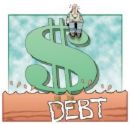imb printer and media blog by Pete on October 23, 2009
In reality, per gallon, gas is one of the lesser expensive items on the list. At approximately $3.00 per gallon, it is about twice the cost of Kool-Aid per gallon and only slightly less than auto-antifreeze.
Coming in at about double the price of gas is Evian bottled water. This gourmet H2O bottled from the French Alps costs $6.40 per gallon. … Also in this range is domestic beer, coming in at right around $9.00 per gallon.
A few of the more expensive liquids may surprise you. Vanilla extract, often bought in bottles that are less than six ounces is $128.00 for an entire gallon. You could bake quite a few cakes for that price! Penicillin clocks in at $302, very reasonable considering it may save your life. Speaking of life, human blood is about $1500.00 a gallon. Again, a very reasonable price to pay for life, but it really puts the per gallon cost of printer ink into perspective.
The study showed that the average cost of black and white printer ink is $2700.00 per gallon. Since most people use colored ink in addition to black and white ink, I estimated the cost of a color cartridge. Per gallon, the approximate cost of an average quality ink was $5500. It costs nearly four times as much to refill your printer as it would to keep your heart pumping. [Emphasis added.]







